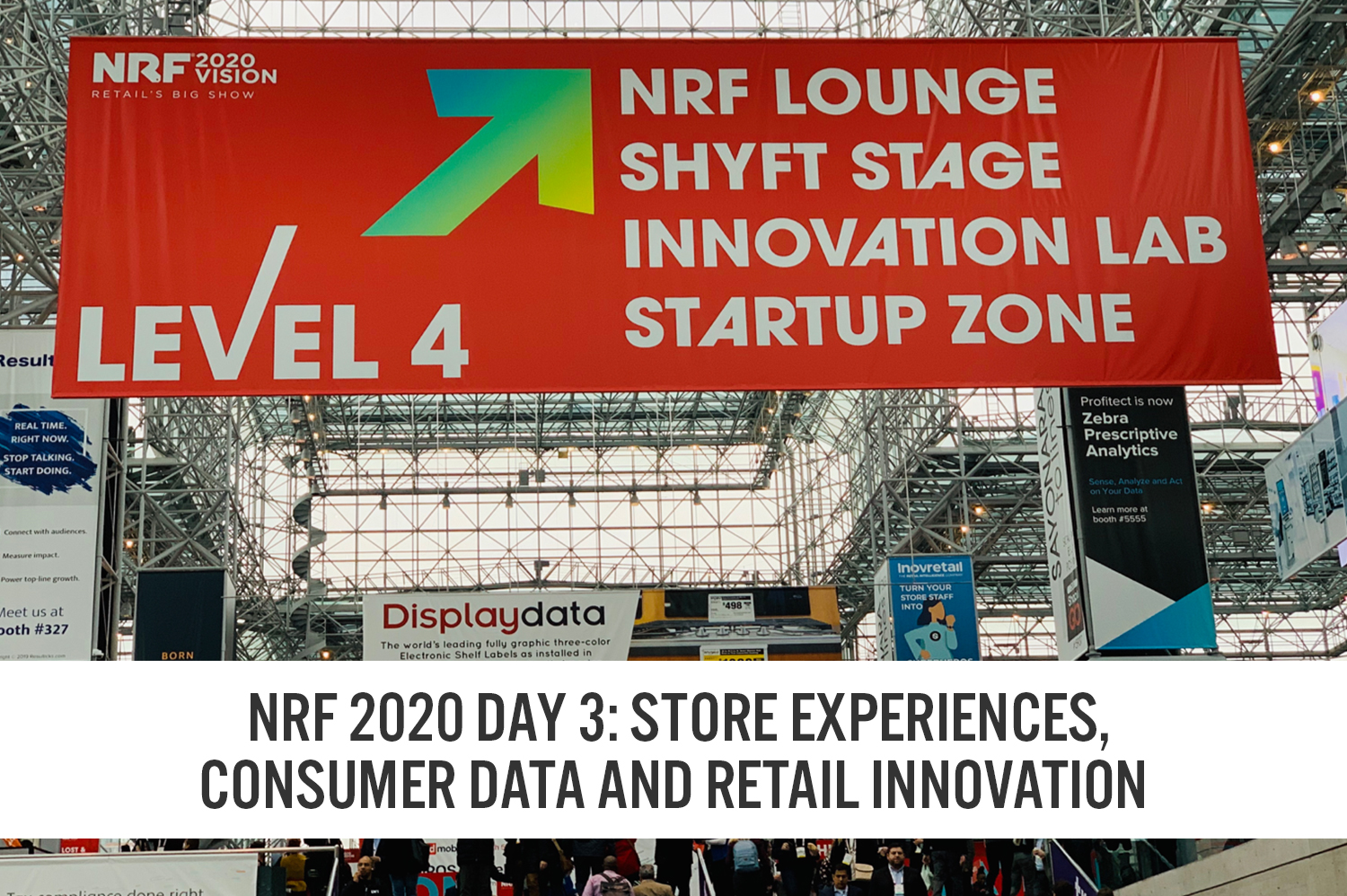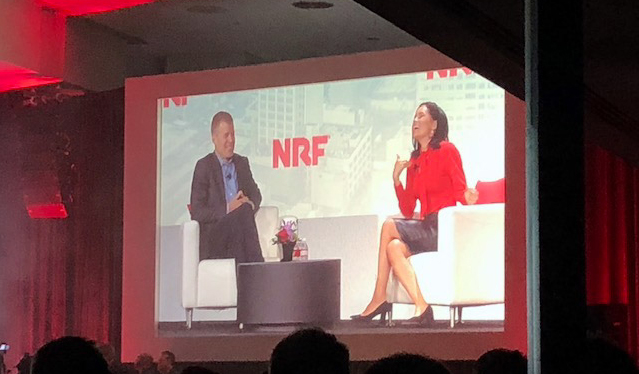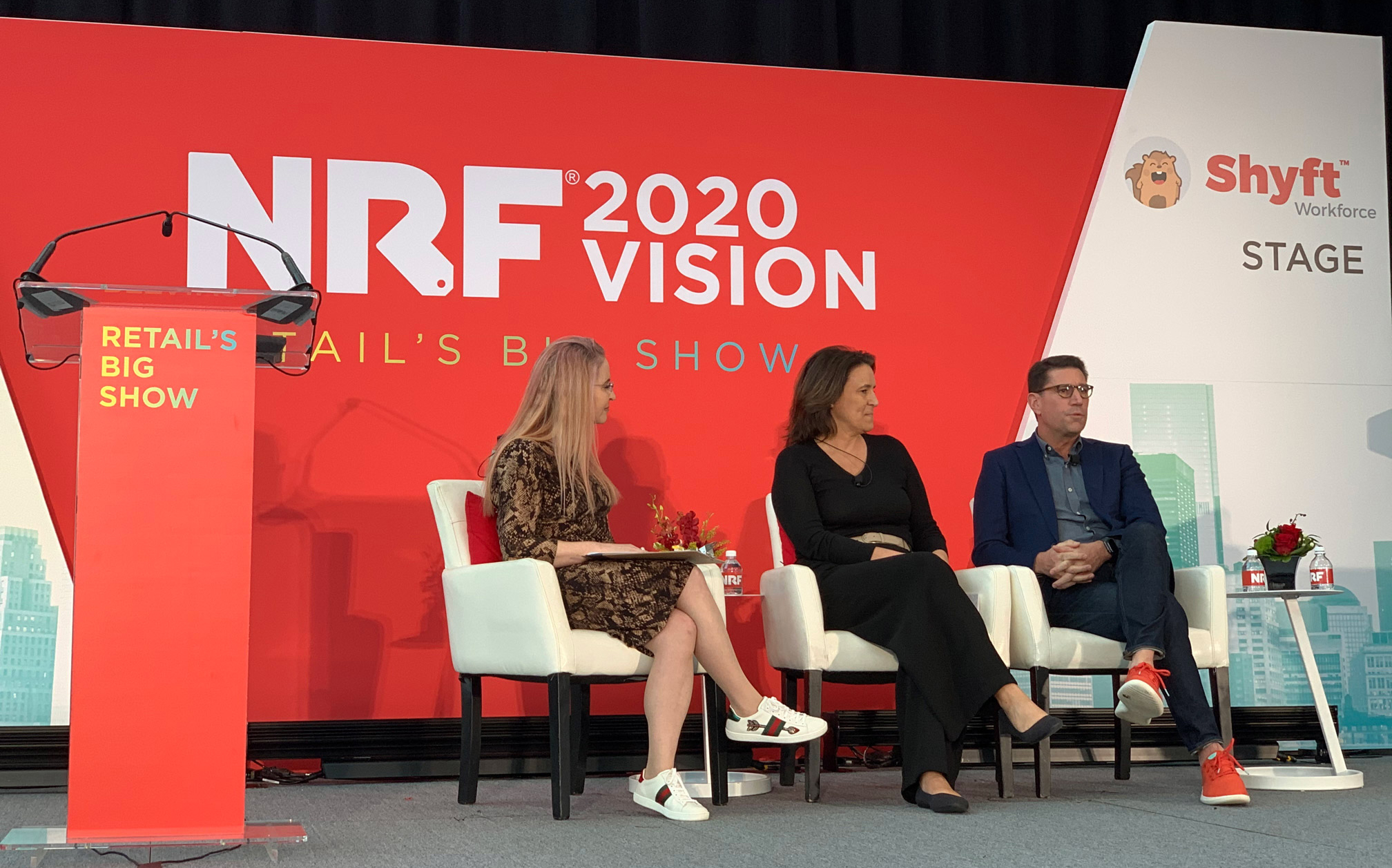
DIpil Das
Nordstrom NYC uses in-store experiences to bring a different vibe to the department store
Nordstrom Co-President Erik Nordstrom outlined how its recently opened New York City store offer more in-store experiences than other stores in the company’s portfolio, and that the new approach resonates with consumers.
Nordstrom added that in the best retail city in the world, the company knew it had to bring its “A-game.” The company signed the New York City store deal in 2012, but the business case for the store changed. Back then, metrics looked only at the four-wall performance. Now, the company realizes that a physical presence boosts online sales to the surrounding area, and now takes in metrics from well outside the store’s four walls to asses performance.
Another learning is that stores need to be more experiential and cannot be just about the convenience of picking something up. Nordstrom said the New York City store is the most experiential store in its portfolio, and has the most food and beverage offerings. In the main shoe department, there is a bar in which customers can drink while they shop. These in-store experiences completely transform the atmosphere of the stores, help the company better connect with customers—and even help customers connect better with one another in the more relaxed environment. It makes shopping fun.
[caption id="attachment_102305" align="aligncenter" width="700"] Erik Nordstrom, Co-President, Nordstrom, speaks to NBC News correspondent Jo Ling Kent
Erik Nordstrom, Co-President, Nordstrom, speaks to NBC News correspondent Jo Ling Kent
Source: Coresight Research [/caption] Strengthen corporate culture based on consumers’ core impression of the brand Under Armour Executive Chairman and Brand Chief Kevin Plank outlined how the company is leveraging data insights to measure outcomes as it works to build a stronger brand image. The first step is to understand the business and consumers. Under Armour surveyed over 40,000 consumers in four key markets—and learned that consumers consider performance improvement as a core value of the brand, i.e. that Under Armour products will help them perform better in athletic activities. The company used that information to build partnerships with professional athletes to create a brand culture that people are proud of and by which they feel inspired. But the company does not rely on customer surveys alone: It also built a connected fitness business to gather consumer data that would help it better understand consumer lifestyles and habits to inform new product development. While consumers may see performance enhancement as a key brand value proposition, Plank said he thinks performance and fashion are not mutually exclusive: Without beauty, there’s no performance. Brands should embrace this new culture and design products that provide both. Leverage Alibaba’s platform to attract Chinese consumers Alibaba Group’s Tmall Luxury Division Head of Fashion and Luxury Christina Fontana outlined how the company built technologies and services to allow brands to speak to Chinese customers directly. The company has 700 million active consumers on the platform who, on average, open the app seven times a day looking for content—and to see what other people are doing. Brands working with Alibaba gain access to Alibaba consumer data, and can leverage those insights to strengthen their value proposition for China’s increasingly affluent—and increasingly demanding—younger consumers. The Tmall Trend Center helps brands study consumer data and incorporate findings into product development, and Fontana said many small brands are entering China to collect consumer data. Fontana encouraged established brands entering the China market to target consumers 10-15 years younger than they would in western markets. Last year, the platform attracted 100 million new customers, many of them young, and company data shows China’s younger consumers are interested in craftmanship and brand history, making it important for brands to tell their stories repeatedly. Fontana said 80% of Tmall shoppers read online reviews, and outlined the importance of using the right tools to reach local consumers: China’s consumers rely heavily on the recommendations of key opinion leaders (KOLs) and other customers, so brands should use them to reach local consumers. Livestreaming is also huge in China and many companies use it to tell their brand stories—and with Alibaba technology, viewers can buy directly via the livestream. Gain insights from Chinese consumers: apply to the world Allbirds International President Erick Haskell shared his story of entering the China market. The company launched online and offline at the same time. The idea of treating the Chinese market as a laboratory is growing. Companies can test and learn in China and apply the findings to the rest of the world. As a direct-to-consumer brand, Allbirds can secure almost immediate feedback, and despite making some 42 modifications to one product over a three-year period, the company still learned a lot from its Tmall consumer feedback in its first week—sometimes insights the company did not get in other markets. Haskell was also surprised at the high mobile penetration rate in China: He said 95% of Allbirds China sales come from mobile, compared to only 50% in the US. Haskell also noted that sustainability messaging is not as important in China as it is in the west in making purchasing decisions, adding that China’s media is also much more fragmented. Partnering with Alibaba helped the company better understand how to reach China’s consumers, using digital platforms. [caption id="attachment_102306" align="aligncenter" width="700"] From left to right: Deborah Weinswig, CEO and Founder at Coresight Research; Christina Fontana, Head of Fashion and Luxury at the Tmall Luxury Division of Alibaba Group; Erick Haskell, International President at Allbirds
From left to right: Deborah Weinswig, CEO and Founder at Coresight Research; Christina Fontana, Head of Fashion and Luxury at the Tmall Luxury Division of Alibaba Group; Erick Haskell, International President at Allbirds
Source: Coresight Research[/caption] Stay competitive through technology innovation Private equity firm MidOcean Partners’ Vice Chairman of the Executive Board for Consumer Matthew Rubel outlined how Li & Fung leverages technology to deliver innovative logistics solutions to retailers. Rubel predicted that the current trade issues between the US and China would stimulate competition that will ultimately drive innovation and let companies focus on the market they can own in a cost-efficient matter. Faire Cofounder and CEO Max Rhodes said traditional sourcing practices interfere with innovation, given the current digital transformation occurring everywhere else in retail. Data-driven merchandising can help brands and retailers, and everyone needs to embrace new technology to remain competitive.
 Erik Nordstrom, Co-President, Nordstrom, speaks to NBC News correspondent Jo Ling Kent
Erik Nordstrom, Co-President, Nordstrom, speaks to NBC News correspondent Jo Ling Kent Source: Coresight Research [/caption] Strengthen corporate culture based on consumers’ core impression of the brand Under Armour Executive Chairman and Brand Chief Kevin Plank outlined how the company is leveraging data insights to measure outcomes as it works to build a stronger brand image. The first step is to understand the business and consumers. Under Armour surveyed over 40,000 consumers in four key markets—and learned that consumers consider performance improvement as a core value of the brand, i.e. that Under Armour products will help them perform better in athletic activities. The company used that information to build partnerships with professional athletes to create a brand culture that people are proud of and by which they feel inspired. But the company does not rely on customer surveys alone: It also built a connected fitness business to gather consumer data that would help it better understand consumer lifestyles and habits to inform new product development. While consumers may see performance enhancement as a key brand value proposition, Plank said he thinks performance and fashion are not mutually exclusive: Without beauty, there’s no performance. Brands should embrace this new culture and design products that provide both. Leverage Alibaba’s platform to attract Chinese consumers Alibaba Group’s Tmall Luxury Division Head of Fashion and Luxury Christina Fontana outlined how the company built technologies and services to allow brands to speak to Chinese customers directly. The company has 700 million active consumers on the platform who, on average, open the app seven times a day looking for content—and to see what other people are doing. Brands working with Alibaba gain access to Alibaba consumer data, and can leverage those insights to strengthen their value proposition for China’s increasingly affluent—and increasingly demanding—younger consumers. The Tmall Trend Center helps brands study consumer data and incorporate findings into product development, and Fontana said many small brands are entering China to collect consumer data. Fontana encouraged established brands entering the China market to target consumers 10-15 years younger than they would in western markets. Last year, the platform attracted 100 million new customers, many of them young, and company data shows China’s younger consumers are interested in craftmanship and brand history, making it important for brands to tell their stories repeatedly. Fontana said 80% of Tmall shoppers read online reviews, and outlined the importance of using the right tools to reach local consumers: China’s consumers rely heavily on the recommendations of key opinion leaders (KOLs) and other customers, so brands should use them to reach local consumers. Livestreaming is also huge in China and many companies use it to tell their brand stories—and with Alibaba technology, viewers can buy directly via the livestream. Gain insights from Chinese consumers: apply to the world Allbirds International President Erick Haskell shared his story of entering the China market. The company launched online and offline at the same time. The idea of treating the Chinese market as a laboratory is growing. Companies can test and learn in China and apply the findings to the rest of the world. As a direct-to-consumer brand, Allbirds can secure almost immediate feedback, and despite making some 42 modifications to one product over a three-year period, the company still learned a lot from its Tmall consumer feedback in its first week—sometimes insights the company did not get in other markets. Haskell was also surprised at the high mobile penetration rate in China: He said 95% of Allbirds China sales come from mobile, compared to only 50% in the US. Haskell also noted that sustainability messaging is not as important in China as it is in the west in making purchasing decisions, adding that China’s media is also much more fragmented. Partnering with Alibaba helped the company better understand how to reach China’s consumers, using digital platforms. [caption id="attachment_102306" align="aligncenter" width="700"]
 From left to right: Deborah Weinswig, CEO and Founder at Coresight Research; Christina Fontana, Head of Fashion and Luxury at the Tmall Luxury Division of Alibaba Group; Erick Haskell, International President at Allbirds
From left to right: Deborah Weinswig, CEO and Founder at Coresight Research; Christina Fontana, Head of Fashion and Luxury at the Tmall Luxury Division of Alibaba Group; Erick Haskell, International President at Allbirds Source: Coresight Research[/caption] Stay competitive through technology innovation Private equity firm MidOcean Partners’ Vice Chairman of the Executive Board for Consumer Matthew Rubel outlined how Li & Fung leverages technology to deliver innovative logistics solutions to retailers. Rubel predicted that the current trade issues between the US and China would stimulate competition that will ultimately drive innovation and let companies focus on the market they can own in a cost-efficient matter. Faire Cofounder and CEO Max Rhodes said traditional sourcing practices interfere with innovation, given the current digital transformation occurring everywhere else in retail. Data-driven merchandising can help brands and retailers, and everyone needs to embrace new technology to remain competitive.